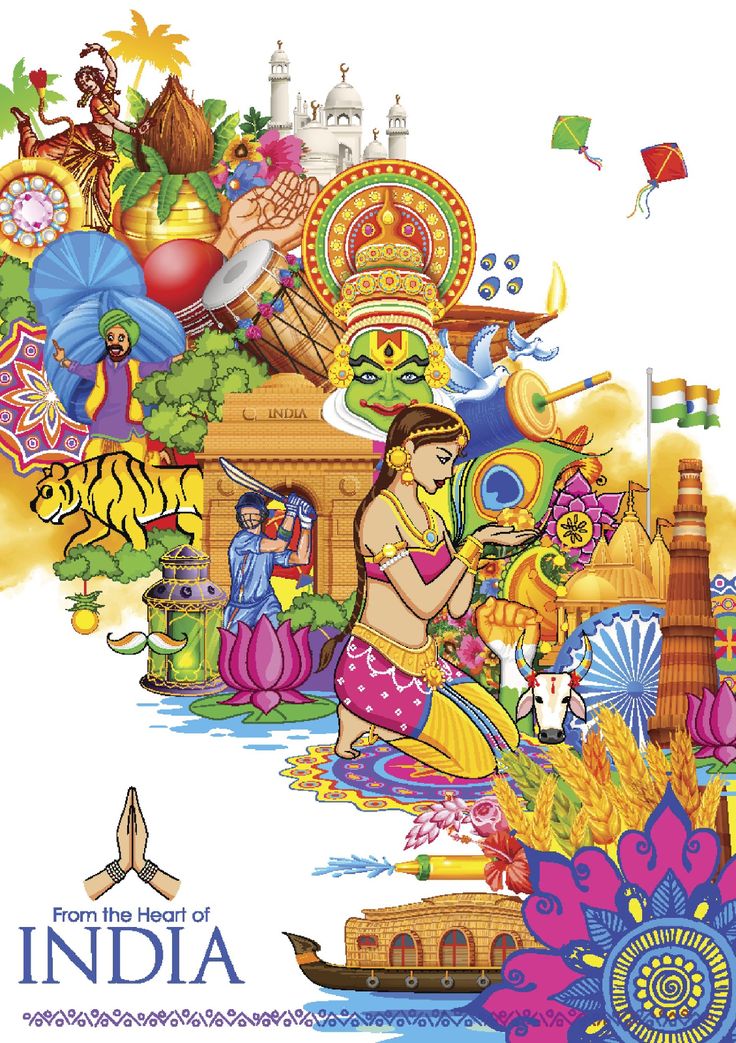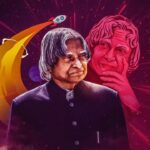Indian Culture: Biography, Daily Life, Impact, and Significance
Indian Culture: India’s cultural heritage is one of the oldest and richest in the world, shaped by a diverse mix of languages, religions, art forms, and philosophies. Indian culture influences every aspect of life in the country, from its religious practices to its festivals, clothing, food, and traditional arts. In this article, we explore the history, significance, daily life impacts, and broader importance of Indian culture in shaping society.
History of Indian Culture
Indian culture dates back thousands of years and has evolved through multiple historical stages. The earliest records of Indian culture come from the Indus Valley Civilization (3300–1300 BCE), known for its advanced urban planning and trade systems. Over centuries, the culture was enriched by the influence of Vedic traditions, Buddhism, Jainism, and later, Islamic and colonial interactions.
The Gupta Empire (4th–6th centuries) is often referred to as the “Golden Age” of Indian culture, where art, science, and literature flourished. India’s diverse culture expanded further under the Mughal Empire (16th–18th centuries), blending Persian, Central Asian, and Indian traditions.
Post-independence, Indian culture retained its rich diversity, embracing modern influences while holding onto ancient customs and traditions.
Indian culture is one of the oldest and most diverse in the world, encompassing a rich tapestry of traditions, art forms, festivals, cuisine, and more. Here’s a list of key elements that define Indian culture:
1. Classical Dance Forms:
India has eight classical dance forms, each originating from different regions:
- Bharatanatyam – Tamil Nadu
- Kathak – North India (Uttar Pradesh, Rajasthan)
- Kathakali – Kerala
- Kuchipudi – Andhra Pradesh
- Odissi – Odisha
- Manipuri – Manipur
- Mohiniyattam – Kerala
- Sattriya – Assam
2. Classical Music:
Indian classical music is divided into two main traditions:
- Hindustani Classical Music – North India
- Carnatic Classical Music – South India
Instruments commonly used include:
- Sitar, Tabla, Sarod, Flute, Veena, Mridangam, and Santoor.
3. Festivals:
India celebrates a multitude of festivals, reflecting its religious and cultural diversity:
- Diwali – Festival of Lights
- Holi – Festival of Colors
- Navratri and Durga Puja – Celebrating the goddess Durga
- Eid – Islamic festivals
- Christmas – Celebrated by Christians
- Pongal/Makar Sankranti – Harvest festivals
- Onam – Kerala’s harvest festival
- Baisakhi – Punjabi harvest festival
- Ganesh Chaturthi – Celebrating Lord Ganesha
- Raksha Bandhan – Celebrating sibling bonds
4. Traditional Clothing:
- Sari – Worn by women across India
- Salwar Kameez – Popular in North India
- Lehenga Choli – Traditional attire for weddings and festivals
- Dhoti and Kurta – Worn by men
- Sherwani – Formal attire for men
- Pheran – Traditional Kashmiri attire
- Mekhela Chador – Assamese traditional dress
5. Cuisine:
Indian cuisine varies widely by region:
- North Indian: Butter Chicken, Naan, Rogan Josh, Chole Bhature
- South Indian: Dosa, Idli, Sambar, Uttapam
- East Indian: Rasgulla, Machher Jhol (fish curry), Momos
- West Indian: Dhokla, Pav Bhaji, Vada Pav, Bhelpuri
- Street Food: Pani Puri, Chaat, Samosa, Kachori
6. Languages and Literature:
India has 22 officially recognized languages and hundreds of dialects. Some major languages include:
- Hindi, Bengali, Tamil, Telugu, Marathi, Gujarati, Punjabi, Urdu, Kannada, Odia, and Malayalam.
Indian literature spans ancient texts like the Vedas, Ramayana, and Mahabharata, to modern works by authors like Rabindranath Tagore, R.K. Narayan, and Arundhati Roy.
7. Art and Craft:
- Paintings: Madhubani (Bihar), Warli (Maharashtra), Tanjore (Tamil Nadu), Pattachitra (Odisha)
- Handicrafts: Pashmina shawls (Kashmir), Blue Pottery (Rajasthan), Channapatna toys (Karnataka), Bidriware (Telangana)
- Textiles: Banarasi silk, Kanjeevaram silk, Bandhani (tie-dye), Ikat
8. Architecture:
India’s architectural heritage includes:
- Ancient: Ajanta and Ellora Caves, Khajuraho Temples, Konark Sun Temple
- Medieval: Taj Mahal, Qutub Minar, Red Fort
- Modern: Lotus Temple, Victoria Memorial, Charminar
9. Religions and Spirituality:
India is the birthplace of several religions:
- Hinduism
- Buddhism
- Jainism
- Sikhism
It is also home to significant populations of Muslims, Christians, Parsis, and Jews.
10. Martial Arts:
- Kalaripayattu – Kerala
- Silambam – Tamil Nadu
- Thang-Ta – Manipur
- Gatka – Punjab
11. Folk Traditions:
- Music and Dance: Bhangra (Punjab), Garba (Gujarat), Lavani (Maharashtra), Bihu (Assam)
- Puppetry: Kathputli (Rajasthan), Bommalattam (Tamil Nadu)
- Theater: Yakshagana (Karnataka), Jatra (Bengal)
12. Yoga and Ayurveda:
- Yoga: Originated in ancient India, now a global practice.
- Ayurveda: Traditional system of medicine emphasizing natural healing.
13. Cinema:
- Bollywood: Hindi film industry based in Mumbai
- Regional Cinema: Tamil (Kollywood), Telugu (Tollywood), Malayalam, Kannada, Bengali, and Marathi films
14. Historical Monuments and UNESCO World Heritage Sites:
- Taj Mahal (Agra)
- Jaipur City (Pink City)
- Hampi (Karnataka)
- Khajuraho Temples (Madhya Pradesh)
- Ajanta and Ellora Caves (Maharashtra)
- Sun Temple (Konark, Odisha)
15. Tribal Culture:
India has over 700 tribes, each with unique traditions, languages, and art forms. Some prominent tribes include:
- Gonds (Central India)
- Bhils (Rajasthan, Gujarat)
- Santhals (Jharkhand, West Bengal)
- Nagas (North-East India)
16. Traditional Games:
- Pachisi (ancestor of Ludo)
- Kite Flying
- Gilli Danda
- Kho Kho
- Kabaddi
17. Cultural Symbols:
- National Emblem: Ashoka Chakra
- National Animal: Bengal Tiger
- National Bird: Peacock
- National Flower: Lotus
- National Tree: Banyan
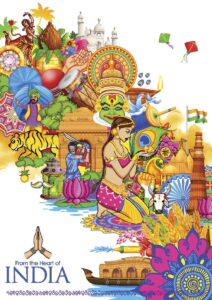
Indian culture is a vibrant blend of ancient traditions and modern influences, making it one of the most unique and diverse in the world.
Biography of Key Cultural Figures
- Rabindranath Tagore
Tagore was a poet, philosopher, and artist, best known for his contribution to literature and music. He composed the Indian national anthem and won the Nobel Prize for Literature in 1913. His works like Gitanjali have significantly shaped Indian culture, focusing on themes of humanism and spirituality. - Mahatma Gandhi
Gandhi was not just a political leader but a cultural icon, advocating for non-violence and self-reliance through the philosophy of Swaraj. His ideas on simplicity, sustainability, and truth continue to influence Indian society and culture. - Satyajit Ray
Ray was a renowned filmmaker whose movies brought Indian storytelling to global cinema. His contributions to the world of arts, especially in film and literature, have left a lasting imprint on Indian culture.
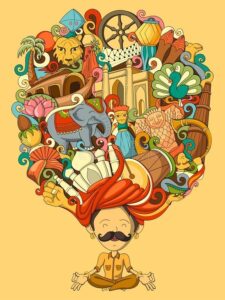
Daily Life Impact of Indian Culture
Indian culture greatly impacts the daily lives of its citizens. Traditions such as yoga, meditation, and Ayurveda are not just cultural practices but also central to the wellness and lifestyle choices of many. Festivals like Diwali, Holi, and Eid bring people together in celebrations of joy, spirituality, and community.
Cuisine is another key aspect, with regional diversity offering distinct flavors and cooking styles. Clothing also varies based on region, with garments like sarees, dhotis, and turbans being central to Indian culture.
Religion plays a vital role in daily life, with Hinduism, Islam, Christianity, Sikhism, and other faiths coexisting, influencing practices, rituals, and holidays.
Impact on Society and Global Influence
Indian culture has had a significant impact on global society. Through the spread of yoga and meditation, Indian cultural practices have found a widespread following worldwide. Indian cinema, particularly Bollywood, has gained international recognition, influencing global pop culture.
Indian philosophies and teachings on peace, equality, and community continue to inspire global movements. India’s art, literature, and music are also celebrated worldwide, making India a major contributor to global culture.
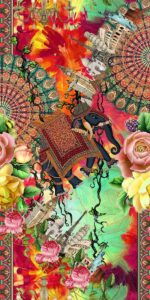
Facts About Indian Culture
- Diversity: India is home to more than 2,000 distinct languages and over 2,000 ethnic groups, making its culture one of the most diverse in the world.
- Festivals: India celebrates over 100 festivals, including Diwali, Holi, Eid, Christmas, and more, with each festival being rooted in cultural, religious, or seasonal traditions.
- Art and Music: Indian classical music (Carnatic and Hindustani) and dance forms like Bharatanatyam, Kathak, and Kathakali are a significant part of the cultural heritage.
Importance and Significance of Indian Culture
The significance of Indian culture lies in its ability to balance tradition and modernity. Indian culture teaches respect for nature, community, and the pursuit of knowledge. It encourages a harmonious relationship between man, nature, and the cosmos, which resonates in practices like Ayurveda and yoga.
Furthermore, Indian culture emphasizes values such as non-violence (Ahimsa), tolerance, and the pursuit of truth. These teachings have inspired movements for civil rights and freedom globally, including the work of Mahatma Gandhi.
Indian culture is not just an integral part of Indian society but also offers invaluable lessons to the world on sustainability, peace, and coexistence.
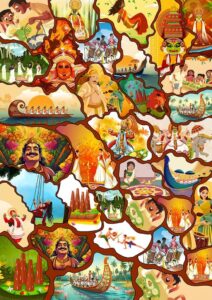
FAQs About Indian Culture
1. What is the significance of yoga in Indian culture?
Yoga is an ancient practice that promotes physical, mental, and spiritual well-being. It originated in India and is now practiced globally for its benefits in health and mindfulness.
2. How do Indian festivals reflect cultural values?
Indian festivals, such as Diwali and Holi, are deeply tied to religious and cultural beliefs, celebrating victory over evil, the harvest, and the importance of family and community.
3. What role does food play in Indian culture?
Food is a significant part of Indian culture, often tied to religious rituals and regional traditions. Indian cuisine is known for its rich flavors and diverse dishes, with spices playing a crucial role.
4. Why is Indian classical music important?
Indian classical music is rooted in ancient traditions and is used to convey emotion, spirituality, and storytelling. It is an essential part of India’s artistic expression and cultural identity.
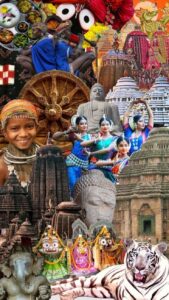
Conclusion: Wishing Continued Growth and Preservation of Indian Culture
Indian culture has a deep, lasting impact on its people and the world. It has evolved over thousands of years, enriching societies with its diverse traditions, arts, and philosophies. As India continues to progress in the modern world, the preservation and celebration of its culture remain essential in maintaining its identity and inspiring future generations.
